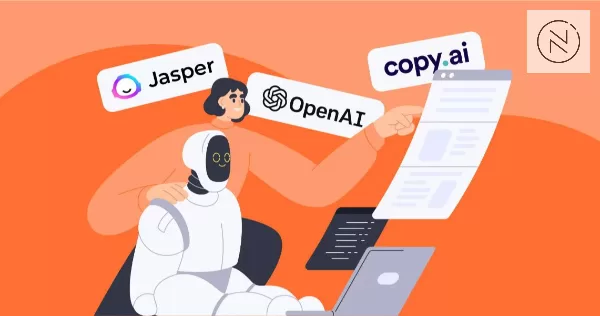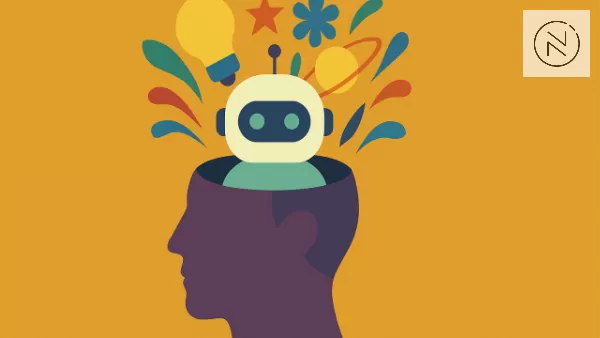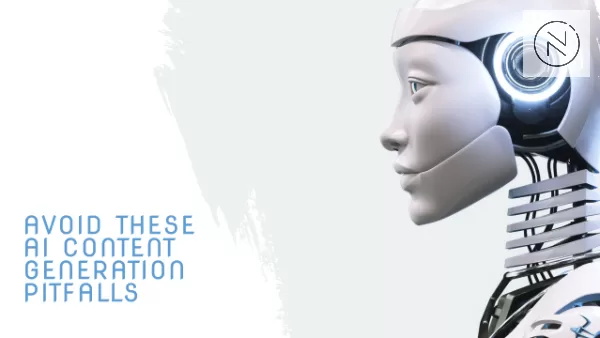Insights
Common Pitfalls AI-Generated Blog Posts In 2025 and How To Avoid Them
On Digitals
02/10/2025
43
In today’s content-driven world, Artificial Intelligence (AI) has become a powerful tool for writers and marketers, promising speed and efficiency. The ability to generate entire blog posts in minutes seems like a silver bullet for content creation. However, relying solely on AI comes with its own set of challenges.
These AI-generated blog posts can often fall into predictable traps, from sounding robotic and generic to providing inaccurate information. To truly leverage the power of AI, it’s essential to recognize the common pitfalls AI-generated blog posts may face and know how to avoid them, ensuring your content remains credible, engaging, and unique.
What Are AI Generated Blog Posts?
Simply put, AI-generated blog posts are articles created primarily or entirely by an AI writing tool. These tools use a type of AI called generative AI, which is trained on vast amounts of text data from the internet. When you provide a prompt, the AI analyzes this data to understand the request and then generates new, coherent text based on the patterns it has learned.
The goal is to produce content that is grammatically correct and logically structured, mimicking human writing. This can range from generating an entire article from a single headline to helping with outlines, paragraphs, or even just brainstorming ideas.
However, without proper oversight, these processes can lead to the common pitfalls AI-generated blog post, where the content may look polished but still lack depth, originality, or accuracy.
So, where does the content that AI generates come from? Can we skip the content verification step and go straight to building the blog based on the structure that the AI provides?
How Can AI Tools Write The Content?
In reality, AI tools are capable of writing by analyzing billions of text samples that have been made public across various platforms. The older version of ChatGPT alone, GPT-3, was trained by OpenAI using 570 GB of filtered and deduplicated data. However, this is only a fraction; the total data GPT-3 was trained on could amount to over 45 TB.

AI tools turning data into content
In short, all AI tools operate based on a user’s input request. The tool will scan its data and generate text that contains all the elements you’ve provided. In just a few seconds, you’ll have a text with a structure ranging from the most basic to the most logical, depending on how specific your request is.
Is AI-Generated Content Really Authentic?
That’s an important point for content creators to consider. In reality, content from these massive data-driven machines isn’t always accurate. They aggregate data but don’t have the ability to distinguish between what’s right and wrong. If the data they’ve aggregated says something is false, even if it’s later proven true, the AI might continue to insist it’s false if it hasn’t been updated.

Truth vs. error — AI doesn’t always know the difference.
Another minor issue is that sometimes an AI doesn’t truly know the answer but will still provide one by pulling from documents that coincidentally contain related keywords, leading to information that’s out of context. This is precisely when human intervention is needed to verify and adjust the content if you still want to use it.
Why Is AI Necessary For Content Blogging?
In many ways, AI has made life easier for content writers from idea generation and structuring articles to optimizing SEO performance, especially when creating AI-generated blog posts.
Here are some notable benefits AI brings to content creation:
Boosting SEO Efficiency
AI can suggest keywords, propose article structures, and offer ideas when you’re stuck. This is particularly useful when producing AI-generated blogs or scaling up your AI-generated blog content. It helps increase output in a shorter time while enhancing brand presence through persuasive, consistent writing.
Supporting Daily Content Production
With faster content generation, marketers can now publish more high-quality AI-generated blog posts on a daily basis. However, it’s essential to review the content before publishing — while spelling and grammar are usually handled well, factual accuracy isn’t always guaranteed.
Improving Content Control and Refinement
Once you’ve outlined your ideas, you can use AI to refine and restructure your AI-generated blogs more logically, spot grammar mistakes, and suggest better word choices. It can even predict what you might be missing and offer insights that enhance the overall quality of your AI-generated blog content.
While AI offers many advantages in content creation, it’s not without its risks. If used carelessly, AI-generated blog posts can lead to subtle but damaging mistakes that affect both content quality and brand credibility.
Below, we’ll explore the common pitfalls in AI-generated blog posts or simply, the pitfalls AI-generated blog post creators must watch out for to avoid costly errors and ensure high-performing content.
Common Pitfalls In AI Generated Blog Need To Know To Avoid
AI offers clear benefits, but it also comes with significant limitations. Issues with copyright, as well as doubts about the authenticity and reliability of AI content, remain major concerns. To gain a deeper perspective, it is essential to examine the common pitfalls AI-generated blog post that many creators often encounter.

Navigating the pitfalls of AI in content creation
Lack of Personalization and Uniqueness
The content that AI provides often lacks personalization, and the overall presentation can feel inauthentic. While you can train an AI tool to adopt your tone and writing style, it is still not a complete replacement. This reflects one of the frequent pitfalls AI-generated blog post, where authenticity and genuine personalization are difficult to achieve.
Moreover, learning from massive amounts of data makes it difficult for AI to continuously update with new information as it emerges, which is both costly and time-consuming. As a result, the generated content can become repetitive and lack originality.
Inconsistent Quality
While AI can quickly generate content for us, it struggles to maintain a brand’s tone unless the user repeatedly specifies the tone of voice. This inconsistency can confuse readers and damage the brand’s credibility, which is crucial in marketing. Human oversight is needed for quality control to ensure the content remains appropriate.
Content Can Contain Misinformation
In reality, content from these massive data-driven machines isn’t always accurate. They aggregate data but don’t have the ability to distinguish between what’s right and wrong. If their aggregated data says something is false—even if it’s later proven true—the AI might continue to insist it’s false if it hasn’t been updated.

Be aware: not all online content is accurate.
Another issue is that sometimes an AI does not truly know the answer but will still provide one by pulling from documents that coincidentally contain related keywords, leading to information that is out of context. This highlights one of the common pitfalls AI-generated blog post, where human intervention is essential to verify and adjust the content before using it.
While the aforementioned challenges are undeniable, we also cannot deny the tremendous benefits that AI brings. So, when “should” we actually need AI, when should we actually use AI to support our content creation work?
When Should We Actually Need AI?
While it’s tempting to use AI for every single writing task, its true power lies in its strategic application. Instead of replacing human writers, AI should be a collaborative partner, especially during key phases of a content campaign. Here are the most effective times to use AI:

The power of human-AI collaboration in content creation
- Brainstorming & Planning Phase: When you’re just starting a new campaign, AI can be a powerful idea generator. It can suggest a list of potential topics, research relevant keywords, and even propose different angles to approach a story. This helps you overcome writer’s block and build a strong content foundation quickly.
- Drafting & Outlining Phase: Once you have your ideas, AI is excellent for building out initial outlines or rough drafts. It can help you structure your thoughts, create logical flows, and even write basic paragraphs. This saves you a tremendous amount of time, allowing you to focus on the more nuanced parts of the writing process.
- Editing & Optimization Phase: After you have written your human-first draft, AI can serve as a powerful editing assistant. It can check for grammar and spelling errors, suggest alternative phrasing, and help you optimize your content for SEO by ensuring you have included relevant keywords and answered common user questions. However, relying too heavily on these tools may lead to overlooked nuances, highlighting another of the pitfalls AI-generated blog post that content creators should keep in mind.
FAQ: Common Pitfalls AI-Generated Blog Posts In 2025 And How To Avoid Them

Avoid AI content generation pitfalls
What are the pitfalls AI-generated blog posts?
AI-generated blog posts are articles created entirely or primarily by AI tools, which analyze and synthesize large datasets from the internet to generate new content.
Is AI-generated content really authentic?
AI-generated content isn’t always accurate or up-to-date. AI lacks the ability to discern true from false, which can lead to misinformation or incomplete content if the source data is outdated or incorrect.
What are the common pitfalls AI-generated blog posts?
Common pitfalls AI-generated blog post include lack of personalization and uniqueness, inconsistent quality, and the risk of inaccurate or off-brand content.
When should we actually use AI to support content creation?
AI is most effective during brainstorming, outlining, and editing phases, helping save time and boost productivity, but it shouldn’t fully replace human creativity.
How can we avoid pitfalls AI-generated blog posts?
It’s essential to thoroughly review and edit AI-generated content, combining it with human creativity to ensure accuracy, brand alignment, and to avoid robotic or repetitive text.
Avoid AI Pitfalls – Create Smarter Content with On Digitals
AI-generated blog content has quickly become a new standard in content development strategies. These tools offer impressive speed and convenience but with that convenience comes a number of hidden challenges, often overlooked in the rush to scale content production.
Rather than relying entirely on automation, combine the power of AI-generated blogs with your own creativity and strategic thinking. Be the one in control of the tools and stay aware of the common pitfalls AI-generated blog post that can undermine your efforts.
At On Digitals, we believe in using AI intelligently and responsibly. By blending automation with the creative expertise of our content specialists, we deliver content that not only meets SEO standards but also reflects your brand’s unique voice and values.
NEWEST POSTS
- A Complete Guide to Programmatic Advertising for Digital Campaign Success
- A Complete Guide to Influencer Marketing ROI for Better Performance
- Account Based Marketing For B2B Teams Seeking Stronger Growth
- How To Spot Fake Followers On Influencer Profiles And Boost ROI
- Nano Vs micro influencers: Key differences And Best Uses
Read more
